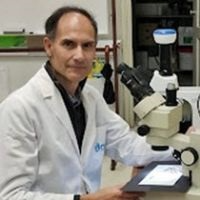Physiology and Biotechnology of Microalgae
A special issue of Applied Sciences (ISSN 2076-3417). This special issue belongs to the section "Applied Biosciences and Bioengineering".
Deadline for manuscript submissions: closed (31 January 2020) | Viewed by 26835
Special Issue Editors
Interests: marine biotechnology; phycology; biodiversity; nutraceuticals
Special Issues, Collections and Topics in MDPI journals
Interests: phycology; microalgae; industrial cultivation; human and animal nutrition
Special Issues, Collections and Topics in MDPI journals
Special Issue Information
Dear Colleagues,
Globally, there has been increasing interest regarding the discovery of new and safe antioxidants from natural sources, such as plant material, to prevent the oxidative deterioration of food and minimize oxidative damage to living cells. Microalgae are photosynthetic microorganisms capable of rapidly generating biomass from solar energy, CO2, and nutrients. These organisms can be industrially cultivated in both closed (photobioreactors) and open (ponds and raceways) systems. The generated biomass can provide important primary metabolites, such as sugars, oils, and lipids, which can be channeled into processes toward the production of high-value products, including human and animal food supplements, transport fuels, industrial chemicals, cosmetics, and pharma- and nutraceuticals. Microalgae biomass and algae-derived compounds have a very wide range of potential applications, from animal feed and aquaculture to human nutrition and health products. Some microalgae are also considered to be a rich source of natural antioxidants.
Prof. Dr. Leonel Pereira
Dr. Joana Silva
Dr. Margarida Costa
Guest Editors
Manuscript Submission Information
Manuscripts should be submitted online at www.mdpi.com by registering and logging in to this website. Once you are registered, click here to go to the submission form. Manuscripts can be submitted until the deadline. All submissions that pass pre-check are peer-reviewed. Accepted papers will be published continuously in the journal (as soon as accepted) and will be listed together on the special issue website. Research articles, review articles as well as short communications are invited. For planned papers, a title and short abstract (about 100 words) can be sent to the Editorial Office for announcement on this website.
Submitted manuscripts should not have been published previously, nor be under consideration for publication elsewhere (except conference proceedings papers). All manuscripts are thoroughly refereed through a single-blind peer-review process. A guide for authors and other relevant information for submission of manuscripts is available on the Instructions for Authors page. Applied Sciences is an international peer-reviewed open access semimonthly journal published by MDPI.
Please visit the Instructions for Authors page before submitting a manuscript. The Article Processing Charge (APC) for publication in this open access journal is 2400 CHF (Swiss Francs). Submitted papers should be well formatted and use good English. Authors may use MDPI's English editing service prior to publication or during author revisions.
Keywords
- microalgae
- algal biotechnology
- industrial applications
- photobioreactors
- biomass
- added-value products







